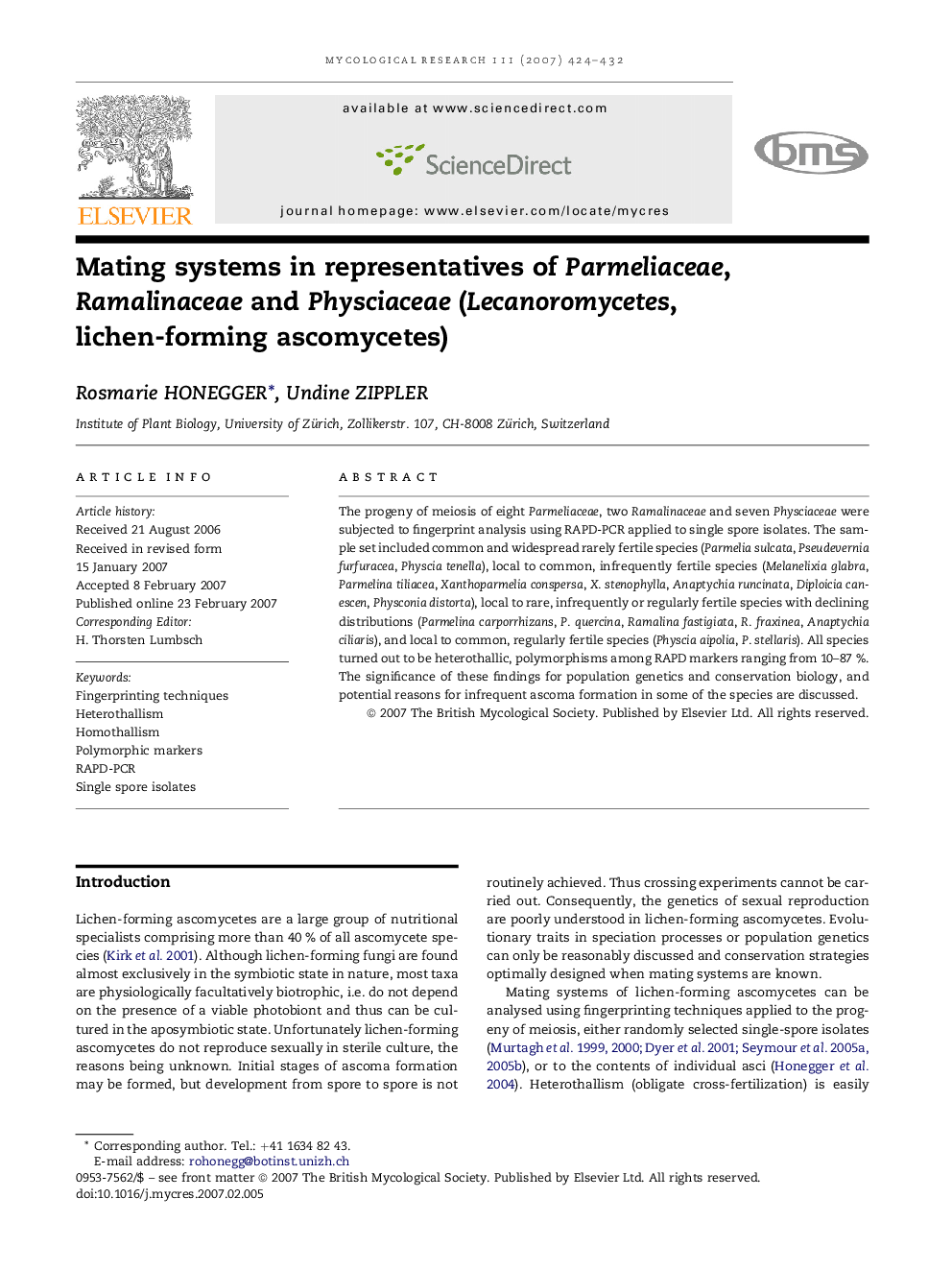| Article ID | Journal | Published Year | Pages | File Type |
|---|---|---|---|---|
| 4357942 | Mycological Research | 2007 | 9 Pages |
The progeny of meiosis of eight Parmeliaceae, two Ramalinaceae and seven Physciaceae were subjected to fingerprint analysis using RAPD-PCR applied to single spore isolates. The sample set included common and widespread rarely fertile species (Parmelia sulcata, Pseudevernia furfuracea, Physcia tenella), local to common, infrequently fertile species (Melanelixia glabra, Parmelina tiliacea, Xanthoparmelia conspersa, X. stenophylla, Anaptychia runcinata, Diploicia canescen, Physconia distorta), local to rare, infrequently or regularly fertile species with declining distributions (Parmelina carporrhizans, P. quercina, Ramalina fastigiata, R. fraxinea, Anaptychia ciliaris), and local to common, regularly fertile species (Physcia aipolia, P. stellaris). All species turned out to be heterothallic, polymorphisms among RAPD markers ranging from 10–87 %. The significance of these findings for population genetics and conservation biology, and potential reasons for infrequent ascoma formation in some of the species are discussed.
